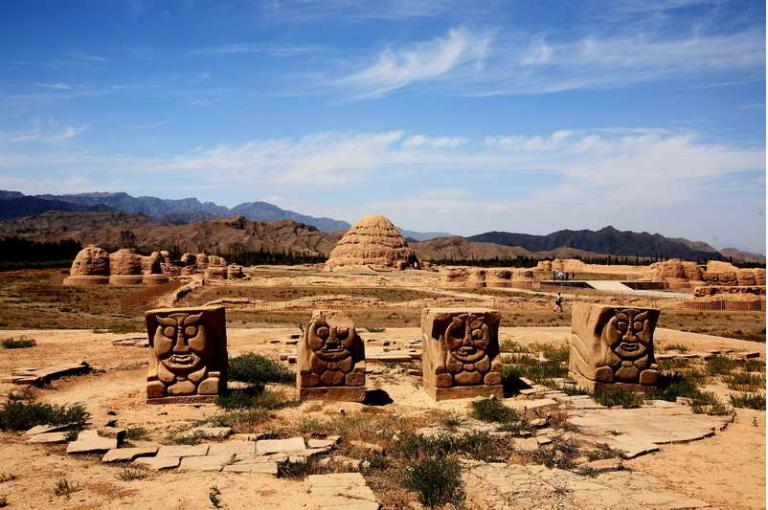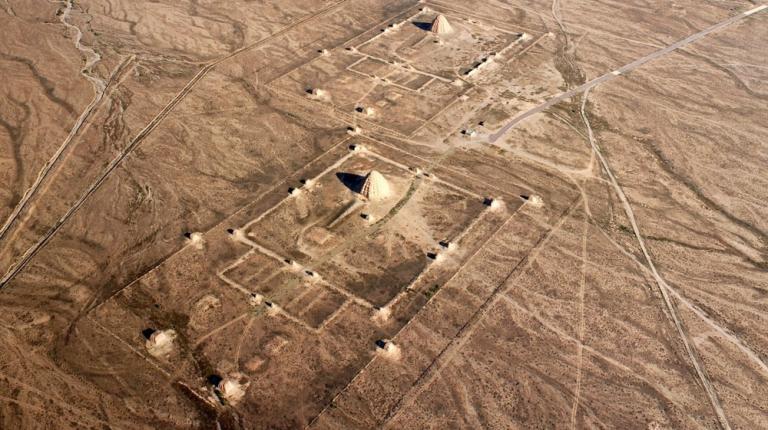Imperial Tombs of the Western Xia
3 min readImperial Tombs of the Western Xia(Part0ne)
In the early 1lth century,the Tuoba group of the ancient nomadic Dangxiangqiang tribe first living in the mountainous area of China’s western plateaus gradually grew stronger and set up the Xia Dynasty political power,known to historians as the Western Xia Dynasty(1038-1227).In the early Tang Dynasty,it showedloyalty to the Tang Dynasty and was given the surname Li,which was the surname of the emperors of the Tang Dynasty.In the early Song Dynasty,it became a dependent state and was given the surname Zhao,which was the surname of the emperors of the Song Dynasty.
During the Tang and Song Dynasties,its people were allowed to settle down in the northern part of present-day Shaanxi Province.
Later,it grew in power and expanded westwards,occupying what are modern Ningxia and Gansu .At the golden age of its power,its reach of influence included today’s Ningxia,northern Shaanxi,western Gansu,northeastern Qinghai and a part of Inner Mongolia .Beginning from 1032 when Li Yuanhao was the emperor,it was known as the Xia Kingdom.In 1227,the Western Xia was conquered by Yuantaizu,emperor of Yuan Dynasty(Genghis Khan).The Western Xia had 10 emperors over a period of 190 years.Whether as a friend or as an enemy,the Western Xia Dynasty became independent of the Song Dynasty,the Liao Dynasty and the Jin Dynasty in the northwest area.
The capital of the Western Xia Dynasty was situated in today’s Yinchuan(then known as Xingzhou),Ningxia,and the sites of the imperial tombs were chosen nearby at the east foot of the Helan Mountains,25 kilometers west of Yinchuan City on the route from Yinchuan to the eastern edge of the Tengger Desert and in a gap in the north/south Helan Mountains.
The Western Xia Dynasty tombs are distributed on a gentle slope along the east foot of the Helan Mountains,covering an area of nearly 40 square kilometers about 4 kilometers wide from east to west and 9 kilometers up the slope from north to south.
According to historical records,the 10 emperors of the Western Xia Dynasty plus Li Jiqian and Li Deming,made emperors after death,who had ruled before Emperor Li Yuanhao,made a total of 12 emperors over a period of 250 years,but there were only 8 tombs,probably because the last few emperors died before they could have their tombs built.

27. Imperial Tombs of the Western Xia (Part Two)
The imperial tombs of the Western Xia Dynasty were made up of the gardens above ground facing south and underground palaces, whose architectural forms are similar to those of the HIO PE Tang and Northern Song Dynasties.
Based on some diggings, each imperial tomb had a uniform layout, covering an area of over 100,000 square meters, surrounded by inner and outer walls. At each corner of the tombs were watchtowers, functioning in the same way as those of the Imperial Palace (Forbidden City) in Beijing. The tombs were organized from south to north: stone gates tablet pavilion, outer city, inner city and halls decorated in an imperial bedroom and spiritual terrace.
In each of the four inner city walls was a gate; between the hall and terrace was an earth ridge shaped like a fish back about 50 meters long-the earth covering of the tomb passage. The northern tip of the ridge was the highest point of the tomb, that is, the mound above the underground palace, also known as the spiritual terrace, which can be seen from far away because of its height.
The spiritual terraces are particular. The imperial tombs of the Han, Tang and Northern Song Dynasties are usually high, square-based mounds with cone-shaped tops cut flat and gently sloped sides. Completely different, the mounds of the Western Xia imperial gardens look like squat Buddhist pagodas, round or octagonal and about 20 meters high. Some have five or seven stories, each of which was built with flying rafters set with rows of tiles, richly decorated with shiny green tiles. The sides of the spiritual terraces are painted deep red, and the walls red and the tiles green. You can imagine how grand the spiritual terraces must have been!









